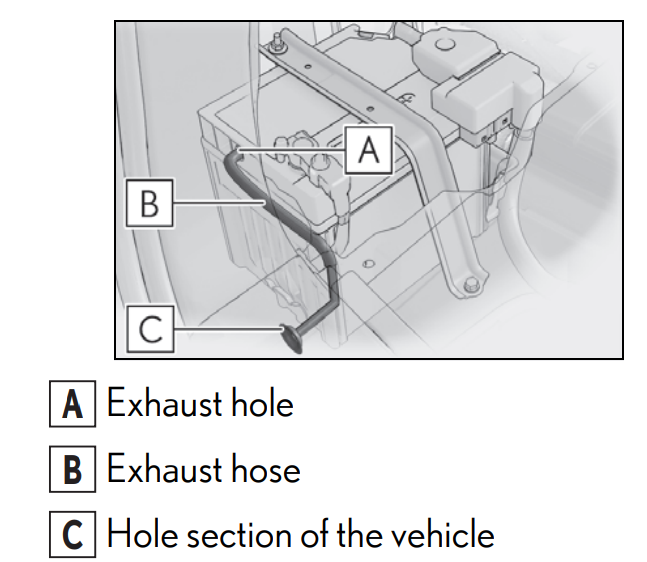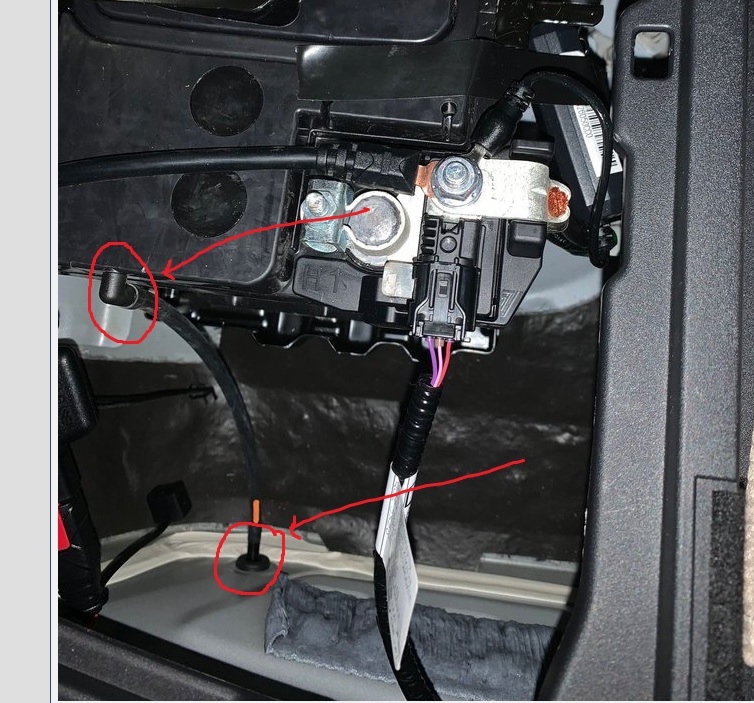Car Maintenance Tips
#16
Another tip for you car nuts out there like me.
The rotor's thinnest area is where it makes contact and is sandwiched between the hub and the wheel. Even in brand new rotor, the thinnest area under the microscope still has peaks and valleys. Imagine rust has formed between the rotor and the hub, and rotor and the wheel. Heat will no longer able to transfer to those two components.
I have always applied a very thin layer of copper antiseize on the surface of the hub to prevent rust and also to help with heat transfer, and a thin layer on the rotor and the wheel side.
The hubs and wheels will absorb some of the heat from the rotors and you will never have a problem with the rotors seizing to the hub and less likely of the rotor's warpage.
Cheers.
The rotor's thinnest area is where it makes contact and is sandwiched between the hub and the wheel. Even in brand new rotor, the thinnest area under the microscope still has peaks and valleys. Imagine rust has formed between the rotor and the hub, and rotor and the wheel. Heat will no longer able to transfer to those two components.
I have always applied a very thin layer of copper antiseize on the surface of the hub to prevent rust and also to help with heat transfer, and a thin layer on the rotor and the wheel side.
The hubs and wheels will absorb some of the heat from the rotors and you will never have a problem with the rotors seizing to the hub and less likely of the rotor's warpage.
Cheers.
The following users liked this post:
enduro963 (08-17-24)
#17
Originally Posted by tammap
Brake rotor warpage usually happens when your foot rests on the brake at a stop.
I have always applied a very thin layer of copper antiseize on the surface of the hub
 Needed during our race/HPDE days. Too much and it files all over the place. <---Don't ask me how I learned that!
Needed during our race/HPDE days. Too much and it files all over the place. <---Don't ask me how I learned that! 

#18
Great thread and I have something else to add; changing the brake fluid. From what I have seen over the decades, this is an often overlooked maintenance procedure which is quite easy to do if you have at least a fair amount of mechanical ability and some very basic tools.
In addition to my Lexus I have a Ram 3500 and a Volvo XC60. The RAM recommended change interval is 2 years while the Volvo is 4 years. So I change out the brake fluid in these vehicles every 3-4 years. There are plenty of Youtube tutorials on how to do this and I use the two person method; my wife works the brake peddle while I work the bleed nipple at the calipers. There is no need to jack up either vehicle and the whole process goes so easy that my wife and I are still speaking to each other when done!
I plan on changing the brake fluid in my Lexus in another 2-3 years.
In addition to my Lexus I have a Ram 3500 and a Volvo XC60. The RAM recommended change interval is 2 years while the Volvo is 4 years. So I change out the brake fluid in these vehicles every 3-4 years. There are plenty of Youtube tutorials on how to do this and I use the two person method; my wife works the brake peddle while I work the bleed nipple at the calipers. There is no need to jack up either vehicle and the whole process goes so easy that my wife and I are still speaking to each other when done!
I plan on changing the brake fluid in my Lexus in another 2-3 years.
#19
Another tip for everyone, especially for those living in the rust belt or where vehicles frequently encounter salt and water.
Spray or apply your vehicle's undercarriage and rust-prone areas with marine anti-seize lubricant spray. Avoid spraying on the sensors. Most of the antiseize will not harm the rubber, but oil-based rust proof spray will harm rubber.
Another reason I don't like to use rust-proof spray is because some rubberized sprays don't adhere to metal well. Some sprays last only a few months to a year, and rust and corrosion will still attack the metal under the coating.
My prefer method of applying antiseize is with a brush for the areas where I can reach.
Cheers
Spray or apply your vehicle's undercarriage and rust-prone areas with marine anti-seize lubricant spray. Avoid spraying on the sensors. Most of the antiseize will not harm the rubber, but oil-based rust proof spray will harm rubber.
Another reason I don't like to use rust-proof spray is because some rubberized sprays don't adhere to metal well. Some sprays last only a few months to a year, and rust and corrosion will still attack the metal under the coating.
My prefer method of applying antiseize is with a brush for the areas where I can reach.
Cheers
Last edited by tammap; 08-16-24 at 11:37 AM.
#20
Another tip for you car nuts out there like me.
The rotor's thinnest area is where it makes contact and is sandwiched between the hub and the wheel. Even in brand new rotor, the thinnest area under the microscope still has peaks and valleys. Imagine rust has formed between the rotor and the hub, and rotor and the wheel. Heat will no longer able to transfer to those two components.
I have always applied a very thin layer of copper antiseize on the surface of the hub to prevent rust and also to help with heat transfer, and a thin layer on the rotor and the wheel side.
The hubs and wheels will absorb some of the heat from the rotors and you will never have a problem with the rotors seizing to the hub and less likely of the rotor's warpage.
Cheers.
The rotor's thinnest area is where it makes contact and is sandwiched between the hub and the wheel. Even in brand new rotor, the thinnest area under the microscope still has peaks and valleys. Imagine rust has formed between the rotor and the hub, and rotor and the wheel. Heat will no longer able to transfer to those two components.
I have always applied a very thin layer of copper antiseize on the surface of the hub to prevent rust and also to help with heat transfer, and a thin layer on the rotor and the wheel side.
The hubs and wheels will absorb some of the heat from the rotors and you will never have a problem with the rotors seizing to the hub and less likely of the rotor's warpage.
Cheers.
Nice thead to start Ascho with these good tips.
#21
Another tip for everyone, especially for those living in the rust belt or where vehicles frequently encounter salt and water.
Spray or apply your vehicle's undercarriage and rust-prone areas with marine anti-seize lubricant spray. Avoid spraying on the sensors. Most of the antiseize will not harm the rubber, but oil-based rust proof spray will harm rubber.
Another reason I don't like to use rust-proof spray is because some rubberized sprays don't adhere to metal well. Some sprays last only a few months to a year, and rust and corrosion will still attack the metal under the coating.
My prefer method of applying antiseize is with a brush for the areas where I can reach.
Cheers
Spray or apply your vehicle's undercarriage and rust-prone areas with marine anti-seize lubricant spray. Avoid spraying on the sensors. Most of the antiseize will not harm the rubber, but oil-based rust proof spray will harm rubber.
Another reason I don't like to use rust-proof spray is because some rubberized sprays don't adhere to metal well. Some sprays last only a few months to a year, and rust and corrosion will still attack the metal under the coating.
My prefer method of applying antiseize is with a brush for the areas where I can reach.
Cheers
In more and more hybrid vehicles, the 12V battery is located in the passenger compartment. Periodically, you need to check the battery vent hose for cracks, tears or restrictions. The vent hose must be connected at all times.
Attached is an incident that happened about 8 years ago in Florida. See under Car Battery.
https://www.clickorlando.com/news/20...ld-be-aware-of
Thank you @TheCDN for the picture of the vent hose.


The following users liked this post:
wrinkle (08-19-24)
#22
This tip is very important and it's a safety matter.
In more and more hybrid vehicles, the 12V battery is located in the passenger compartment. Periodically, you need to check the battery vent hose for cracks, tears or restrictions. The vent hose must be connected at all times.
Attached is an incident that happened about 8 years ago in Florida. See under Car Battery.
https://www.clickorlando.com/news/20...ld-be-aware-of
Thank you @TheCDN for the picture of the vent hose.
In more and more hybrid vehicles, the 12V battery is located in the passenger compartment. Periodically, you need to check the battery vent hose for cracks, tears or restrictions. The vent hose must be connected at all times.
Attached is an incident that happened about 8 years ago in Florida. See under Car Battery.
https://www.clickorlando.com/news/20...ld-be-aware-of
Thank you @TheCDN for the picture of the vent hose.
Last edited by wrinkle; 08-20-24 at 08:02 PM.
The following users liked this post:
tammap (08-21-24)
Thread
Thread Starter
Forum
Replies
Last Post
DaCelsior
LS - 3rd Gen (2001-2006)
0
04-12-19 07:37 AM
SPhoto
LS - 1st and 2nd Gen (1990-2000)
3
01-07-12 07:02 PM
spine911
GS - 3rd Gen (2006-2011)
1
08-14-09 03:41 PM



